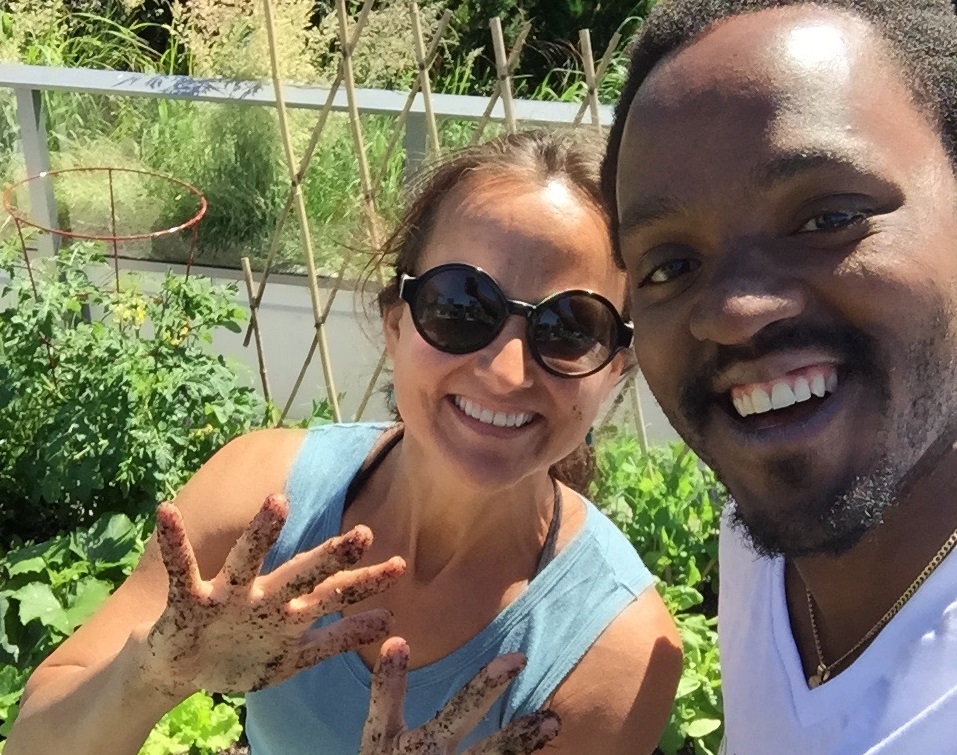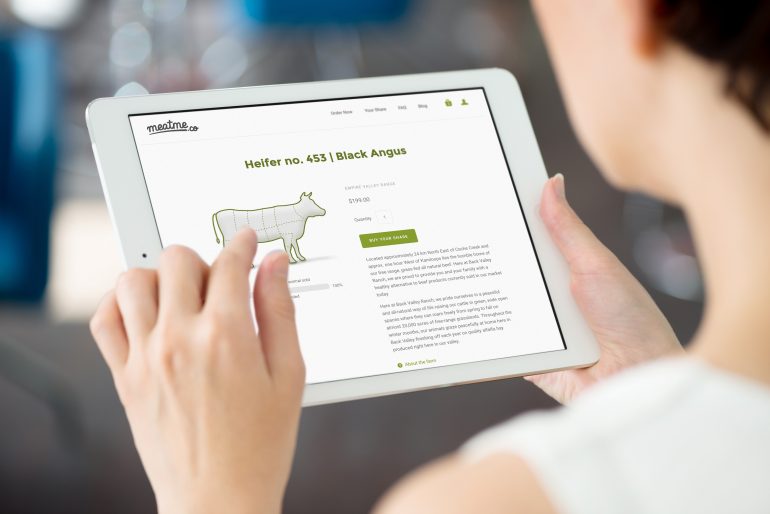You are what you eat – but what about how you eat? Specifically, how do you get your food? Is it ethical – and by extension, are you ethical? The ‘buy local’ movement and growth of foodie culture more generally have woken up the public to question the traditional mode of factory-farm-to-supermarket-to-plate.
Two new Vancouver-based startups, Meatme and My Green Space (launching next month), are showing how to combine mobile apps with greener, more ethical food-sourcing behavior – potentially filling a missing link in the system. I was curious how their apps could help change behavior while presumably filling a market need.
“Where’s the beef?” (And where did we get it from?)
West coast culture has been willing to experiment when it comes to how we get our protein, with backyard chicken farming going mainstream and fish farming taking off (though not without controversy). Red meat production has been relatively immune to change – until recently.
Looking at the new startup Meatme, I wanted to see how CEO Victor Straatman aimed to help us eat meat in a more sustainable way. Launching this month, they’re offering a new method (well, new-ish – apparently, the business model’s already been proven back on Straatman’s home turf in Europe) of connecting carnivores with what they want. Instead of purchasing your meat one deli slice at a time in your local butcher shop or supermarket, you put your money towards buying a whole animal.
“There’s more consciousness in the world of how the mass production of meat is polluting the planet.”
“In the supermarket, meat will be thrown away even after all of the effort put in to produce it,” Straatman said, explaining the problem his app means to solve. “There’s more consciousness in the world of how the mass production of meat is polluting the planet. So eating meat is definitely something we should do responsibly and sustainably.”
Meatme’s app for ordering meat reduces that waste, since no product is stocked before it is bought. An animal only goes to slaughter after it’s fully funded. Customers get a 15-lb meat box containing cuts “from nose to tail.”
This process actually harkens back to how Canadians used to get their meat before the supermarket became popular, Straatman notes. “You would buy a whole steer with friends and put the cuts in your freezer. It’s actually going back to an old way of buying meat,” he said. The process also encourages less waste since you can get a more diverse range of cuts with your order – “to eat only steak, you would have to kill a whole lot of animals. This way you get to experience cuts you might not normally buy.” The meat gets boxed and delivered to customers’ addresses, further saving them the time of going to the store.
To get this off the ground, Straatman went right to the source, starting with a local BC farm near Kamloops that was already servicing the Vancouver test marketplace. “It is meat they can feel good about – no hormones or antibiotics in meat that comes from animals that lived free-range, only going into shelters a few days out of the year,” Straatman said.
Ultimately, the Meatme app is meant to change buying behavior – again, harkening back to a time when Canadians put a bit more planning into their menus instead of buying whatever is on special at the counter on any given day. “You order up-front, buying food for future use, instead of having a mindset, ‘I need this now’, which is what creates a lot of waste (behind the butcher shop counter).” Meatme also cuts out the middleman, giving producers more certainty in what they’re producing for the market, helping keep local farms in business at a time when it’s as difficult as ever to compete with the low-margin mass-producers.
In other words, changing behavior at the end of the food line is what’s going to make it more sustainable at the start of the line. “I know one farmer in Northern BC who has to drive down to the city, has incurred all the costs and if I don’t show up with the check for what he’s produced, he’s lost a lot of business,” Straatman said. “In this particular case, he’s an older immigrant who runs the farm with his daughter. She’ll be the next generation taking on this farm. But if the business doesn’t run well, the business won’t be there for her. So it’s not just better for the customer – it’s better for the farm business to buy the whole animal and pay for it at that point.”
Can Meatme change enough buyers’ behavior to go big? That’s the aim – which could ultimately alter how we bring home the beef to our kitchen tables across North America.

How does your garden grow?
Vancouver’s been on the forefront of the urban gardening wave for a while now. It’s become a social endeavor partly thanks to the economics of the city’s real estate crunch: not many condo dwellers can afford the upgrade to a single family home with a fenced off garden of their own, so community gardens are all the rage. That said, many would-be green-thumbs are put off by a seemingly steep barrier to entry: knowledge. When all you’ve known is an urban apartment habitat, growing peas, carrots, and kale can seem intimidating – particularly when your local yoga class or Ultimate team offer instant gratification with less learning required.
That’s where My Green Space comes in. Launching this April, it’s about helping people grow food with confidence through a range of features: first, planning tools that help first-timers visualize what they can plant in their space. Got a patio in south Vancouver? Plug in the square footage, location and hours of sunlight and the app will show the types of crops that can go in there; even better, algorithms will show which plants should go next to each other. The app adds in scheduled instructions, troubleshooting tips, and an online store where gardeners can get what they need.
When all you’ve known is an urban apartment habitat, growing peas, carrots, and kale can seem intimidating.
Will the app change behavior and promote gardening to the next level in this green city? That’s what co-founder and CEO Michael Moll is hoping for – and the app aims to make that change as seamless as possible. “What we’ve found is it reduces the time of planning a garden by 90 percent,” he said. “There’s no books you need to read or workshops you need to attend. You log in and just set up your plan in 5 minutes.”
Moll came into the gardening habit naturally, growing up in Kenya among his grandparents’ farm of a thousand acres of sustainable farmland – and discovering his own passion for gardening while tending a small plot with his girlfriend, which kept them in fresh vegetables throughout a summer. Having fresh produce in the backyard is just one of the reasons he caught the gardening bug, though.
“When you grow a garden, you become a better person,” Moll said. “You’re more accountable, thinking deeply about what you’re doing, but also connecting with others. We were able to connect to people in our building because of our garden and were probably the first ones to get to know all our neighbors. It’s a way to grow community.”
While My Green Space is in Canada and the United States in the short term, the app will soon be opening up to Australian users in the winter of 2016, adding Europe, South America, and Africa in the next stage. That community is likely to put down roots in a whole lot of new patches of green before they’re through.
When it comes to the ethics and changing behavior around how we get our food, Moll seems skeptical that much good can come of boycotting the industrialized farming system (that presently feeds virtually all of us) – but that people can make a change starting today by growing their own food. A different, better way of getting the food we need, at least partly, can literally come out of your own backyard, powered by technology that fits in the palm of your hand.


